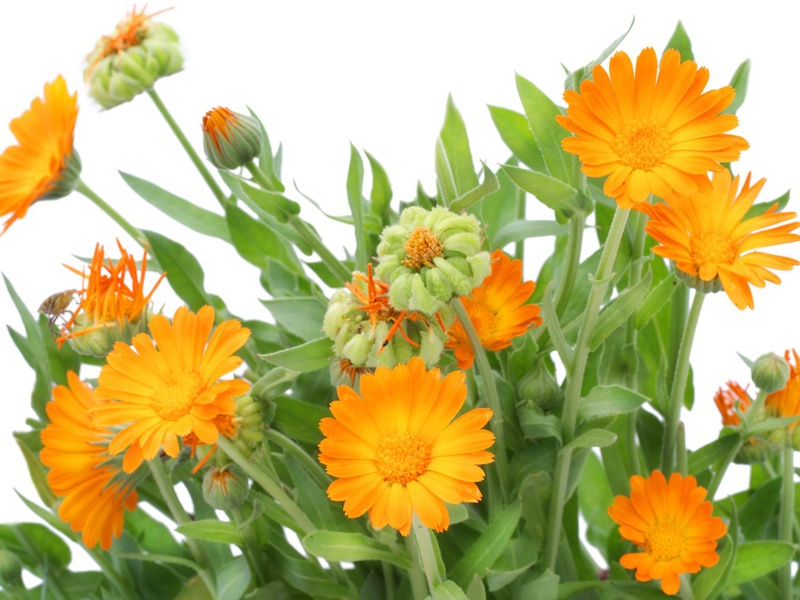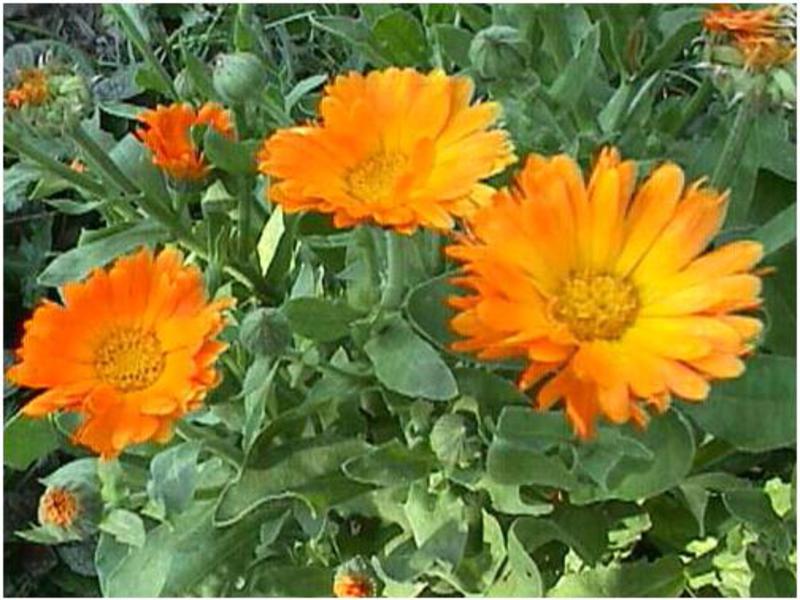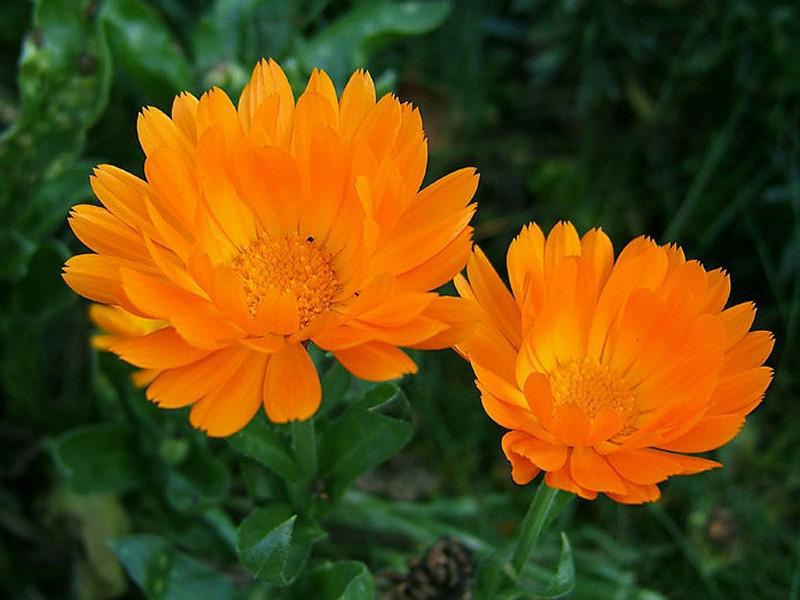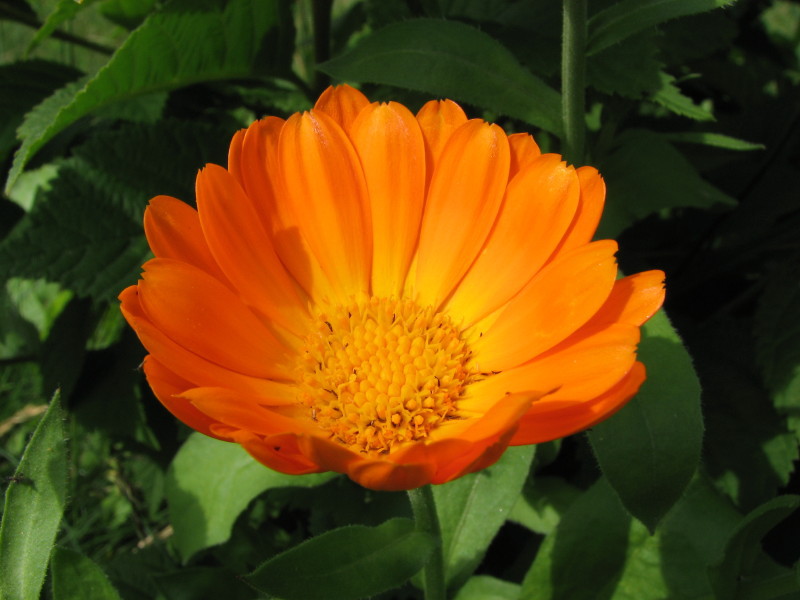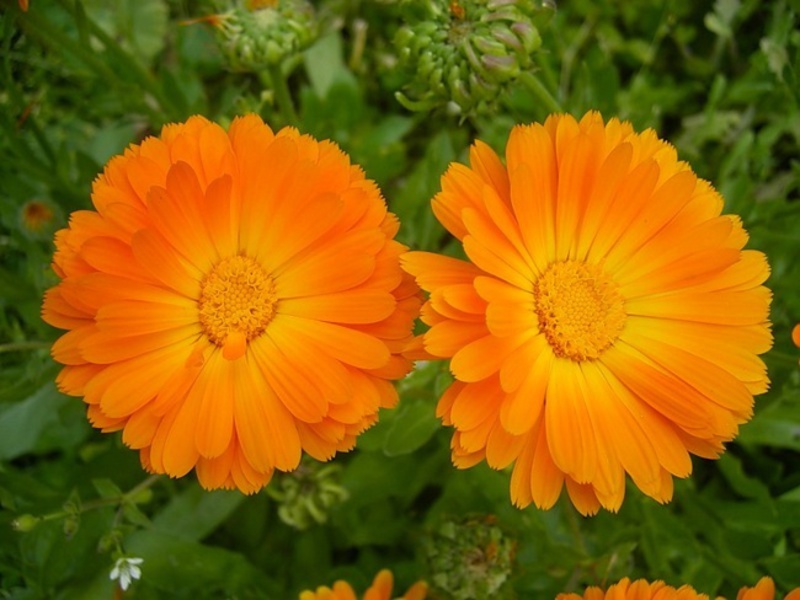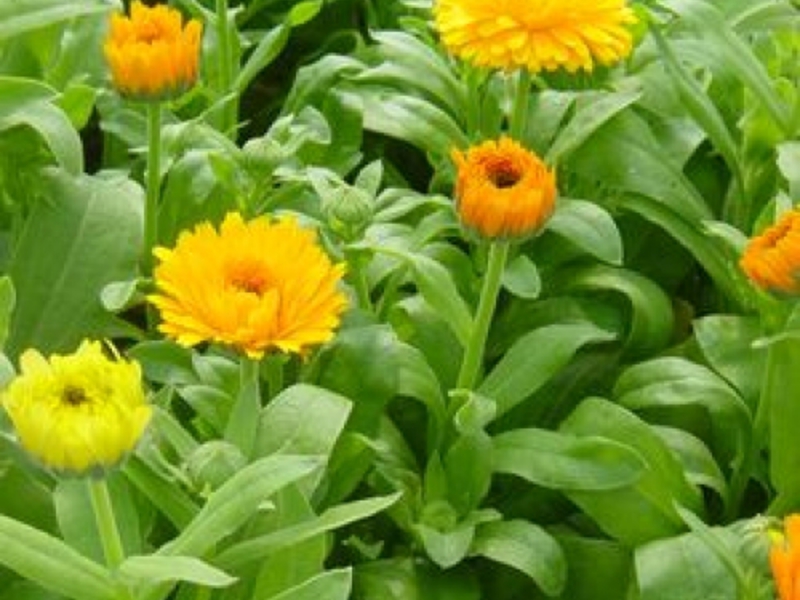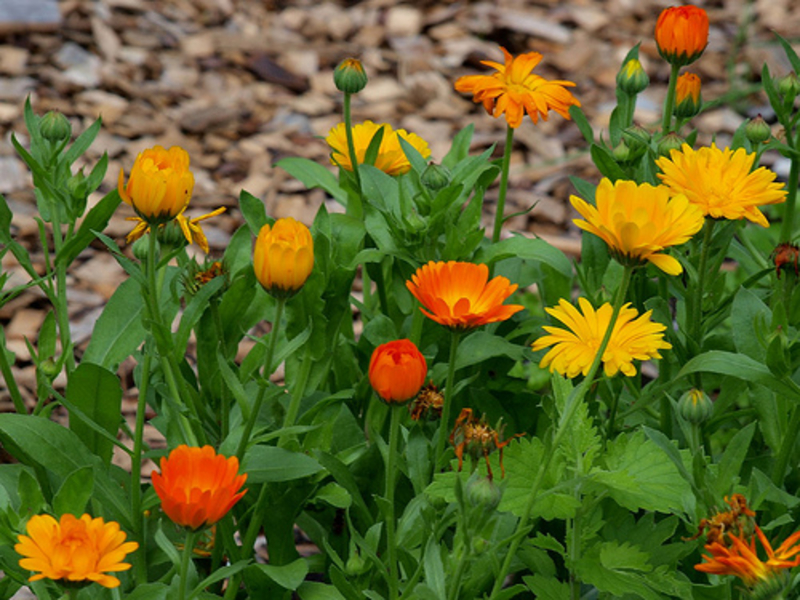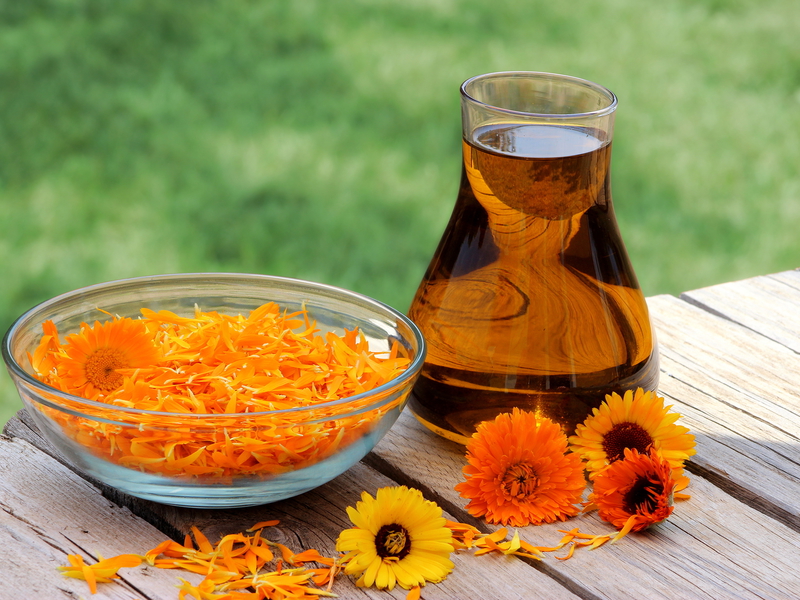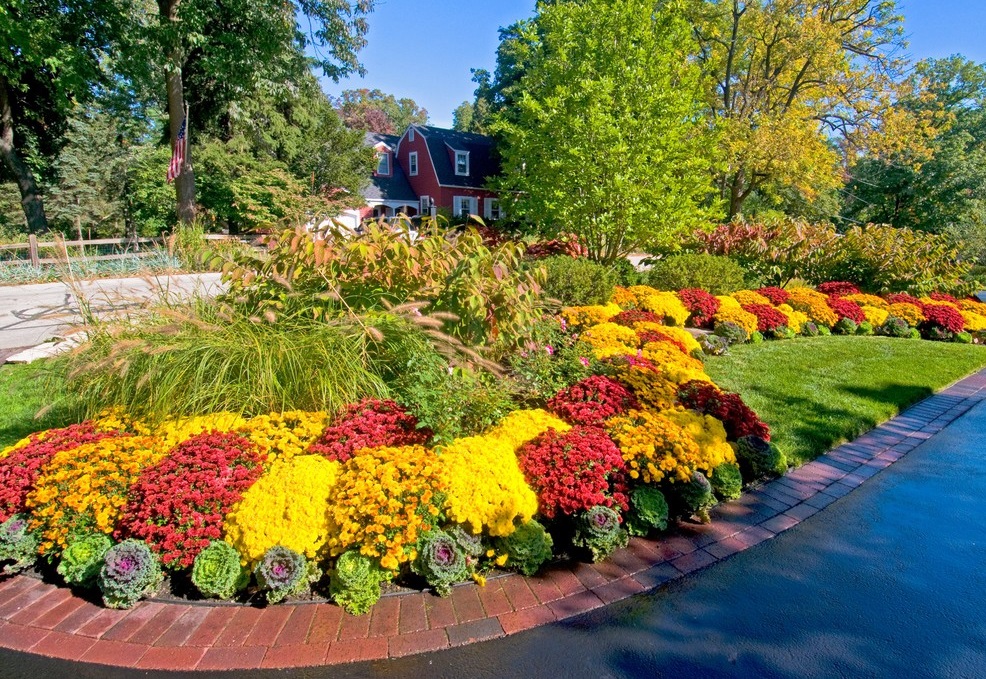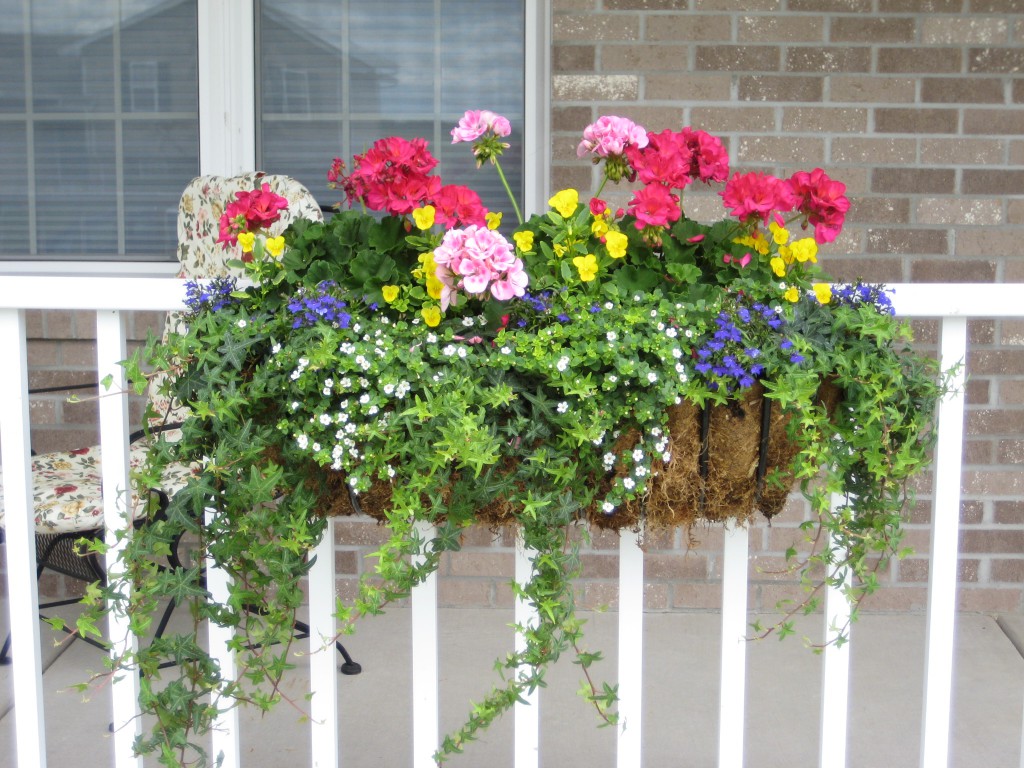Among the many flowers, calendula stands out for its simple beauty and unique qualities. She can be seen in many household plots. Gardeners love it for its easy care, attractive appearance and medicinal properties. To most gardeners, these flowers are known by a different name - marigolds. What is remarkable about the calendula, we learn from the article and appreciate its beauty from pictures and a selection of photos of flowers.
Description of calendula
Marigold flowers adorn garden flower beds with their bright colors. Gardeners like their easy maintenance and decorative qualities. Many also plant them, knowing about the beneficial properties of the plant.
Calendula is a herbaceous crop height from 15 to 75 cm, depending on the type and variety. In total, there are 15 species of such a plant in nature. The most common is the medicinal or pharmacy calendula. In the common people, it is called marigold, so many immediately have a question, where did the plant get such a name. Flower seeds resemble marigolds in shape, hence another common name.
The stems of calendula are strongly branched with thick shoots. They are ribbed light green in color, and the leaves are elongated and simple with a heart-shaped base. Inflorescences are:
- simple;
- terry;
- semi-double.
Their color has all shades of yellow-orange, there are paler flowers and bright juicy. Like sunspots, they stand out against the background of many other flowers in the backyard.
Growing calendula
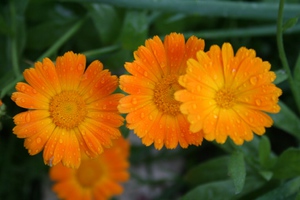 This plant is unpretentious to care for and does not require special care. Calendula propagates by seeds, it can be sown in open ground and after that the seeds will scatter themselves. Their germination persists for 4-5 years... After planting, they germinate in 6-7 days, and the seedlings tolerate transplanting remarkably. Flowers begin to bloom 60-65 days after sowing the seeds. The period of abundant flowering of calendula lasts until the onset of frost.
This plant is unpretentious to care for and does not require special care. Calendula propagates by seeds, it can be sown in open ground and after that the seeds will scatter themselves. Their germination persists for 4-5 years... After planting, they germinate in 6-7 days, and the seedlings tolerate transplanting remarkably. Flowers begin to bloom 60-65 days after sowing the seeds. The period of abundant flowering of calendula lasts until the onset of frost.
Calendula grows best in a well-lit area. Any soil will do, however, it will thrive best in moist soil rich in organic matter.
The flower has a powerful root system. The taproot is shortened and has a small number of strongly branching lateral roots.
Depending on the type of marigold, bushes can be spreading and compact... They are different in height:
- undersized - 25-30 cm;
- medium height - 40-55 cm;
- high - 75 cm.
The color of the shoots and leaves also depends on the type of calendula. They can be light green and deep dark green. Flowers reach 8-10 cm in diameter.
Usually, gardeners sow calendula at different times. The planting period for seeds lasts from March to November. In early spring in March, calendula seeds are sown in low-grade pots. This will allow the bushes to bloom earlier. Starting from April, you can sow seeds in open ground. They are sown in nests at a distance of 15-25 cm from each other. This will give an abundant color of the marigolds in the month of July. If the seeds are sown in July, the marigolds will bloom in August. The brightest and most juicy in color flowers begin pleasing the eye in the autumn season... The very last sowing is performed in November, so that the marigolds will please with flowering as early as possible next year.
To get abundant and gorgeous flowering, it is necessary to thin out the seedlings. When the flowers are fully ripe and begin to bloom, the seeds fall off easily. It is best to collect them when they start to turn brown in the basket. The basket can be completely cut off and wait until the seeds are dry, then collect them.
There are double and non-double varieties of calendula, and it is best to plant them separately so that they cannot pollinate each other. Otherwise, terry will lose their decorative qualities.
Growing calendula in the garden creates more than just an attractive look. This flower disinfects the soil where it grows. It is often planted between vegetables to protect vegetables from pests:
- ticks;
- root rot;
- scale insects.
Varieties and photos of calendula flowers
The "Fiesta Hitana" is among the undersized varieties. The maximum plant can reach a height of 25 cm. The variety is distinguished by large double flowers of bright yellow saturated shades. Inflorescences most often:
- cream;
- orange;
- yellow;
- bicolor.
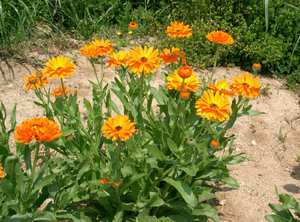 Medium-sized varieties include "Pink surprise" with stems from 45 to 50 cm... It has an unusual pink hue, which is a rarity for such a culture and a real surprise in the garden.
Medium-sized varieties include "Pink surprise" with stems from 45 to 50 cm... It has an unusual pink hue, which is a rarity for such a culture and a real surprise in the garden.
The "Rodio" variety is valued for its bright, rich color of orange-red tones. Inflorescences always bloom for a long period of time, are large in size. The inflorescences-baskets are distinguished by terry and originally rolled petals.
The list of tall calendula includes the "Golden Emperor" variety. The height of the stems reaches 60-70 cm. It attracts the attention of others with its large bright yellow double inflorescences.
A very original and unusual variety can be called "Kablunu Epricot"... This decorative look has an elegant look. The exquisite yellow-cream color of large terry inflorescences gives the flowers an original look.
All the described varieties of calendula flowers will look great against the background of a flower bed and stand in bouquets for a long time.
